Modular Ethernet Connectors (2) + Wall Plate 110 Connect, AMP / Tyco RJ11 (2) + Wall Plate PN: AMP 406375-2 White Wall Plate + Black Connectors (2) |
|
Knock-offs: Please note that we sell only the original AMP connectors, and not the cheap knock-offs that are widely available for under a dollar. |
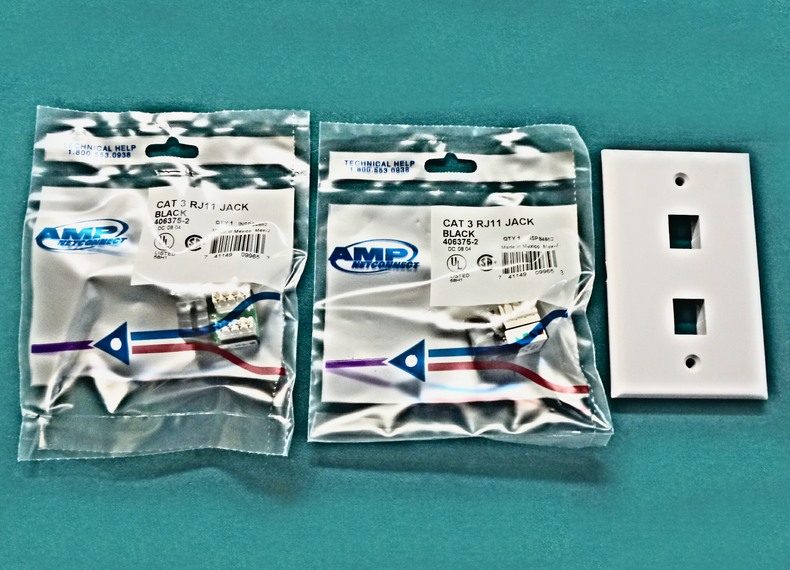
 |
|
These RJ11, (also RJ14 and RJ25) panel connectors have 6 pins, an 8-wire CAT5 style termination block, and the side labels showing you the color codes for CAT 5 as well as the color codes for 4-wire phone wiring, if that's what you prefer (see the red-bordered photo below). |
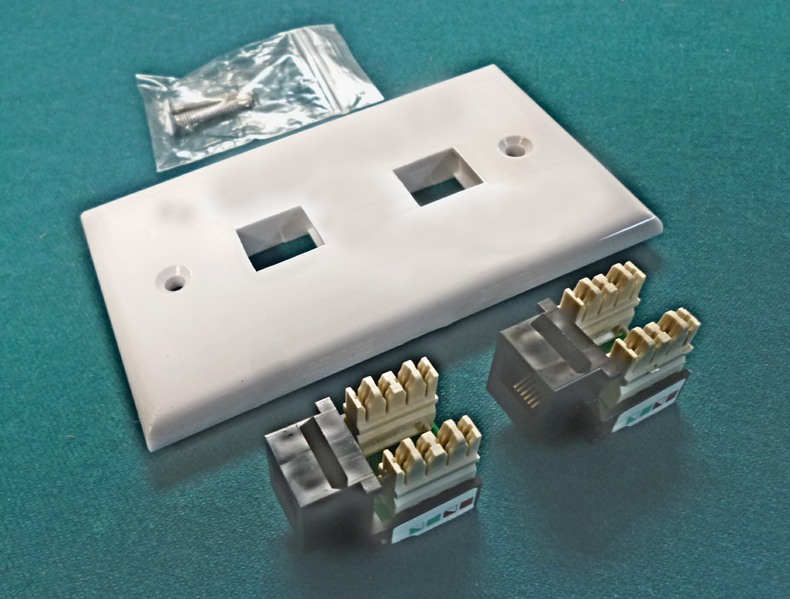
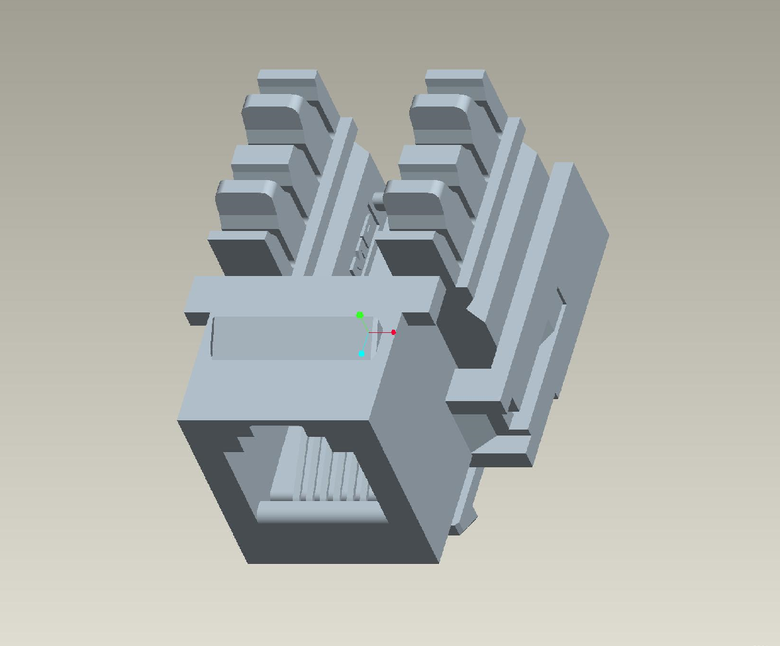 |
|
This is a skeletal look at the connector. |
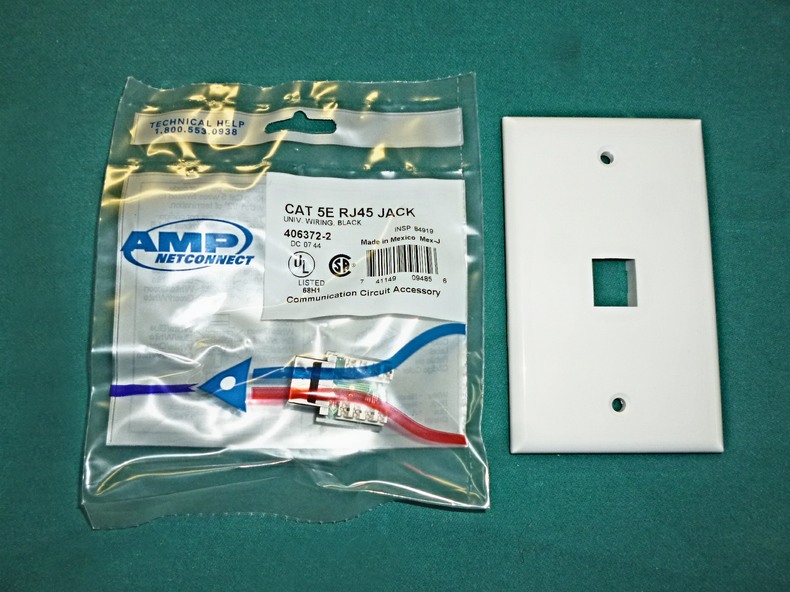
Manufacturer: AMP, Tyco Electronics, TE Connectivity Product Category: Modular / CAT 3 Part Number: AMP 406375-2 (2) Connector Type: RJ11 (2-wire), RJ14 (4-wire) and RJ25 (6-wire) Mounting Style: 110 Panel Jack (2) Gender: Female Ports: 1 Contacts / Positions: 6 Contact Termination Type: IDC / IDT Termination Style: Punch-Down Series: 110 Connect Contact Material: Phosphor Bronze Contact Plating: Gold Housing Material: Polycarbonate (PC) RJ11 Color: Black Wall Plate Color: White |
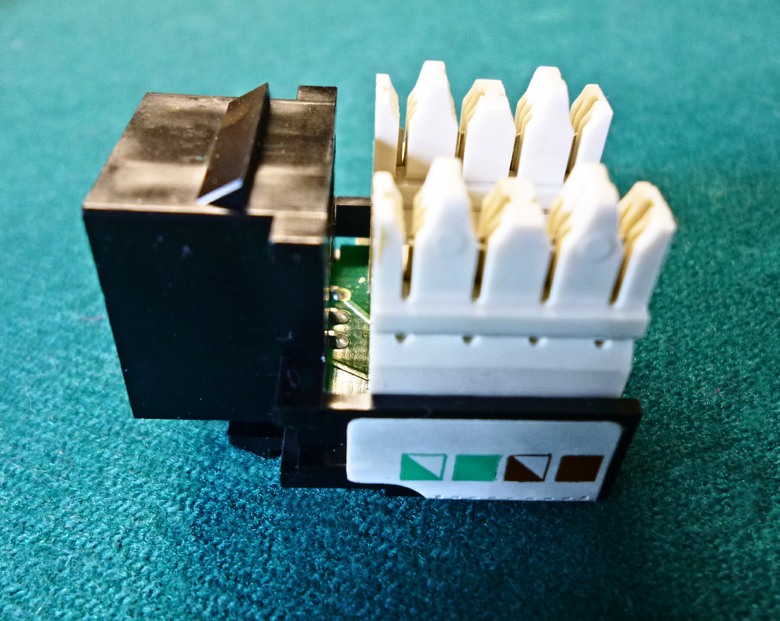
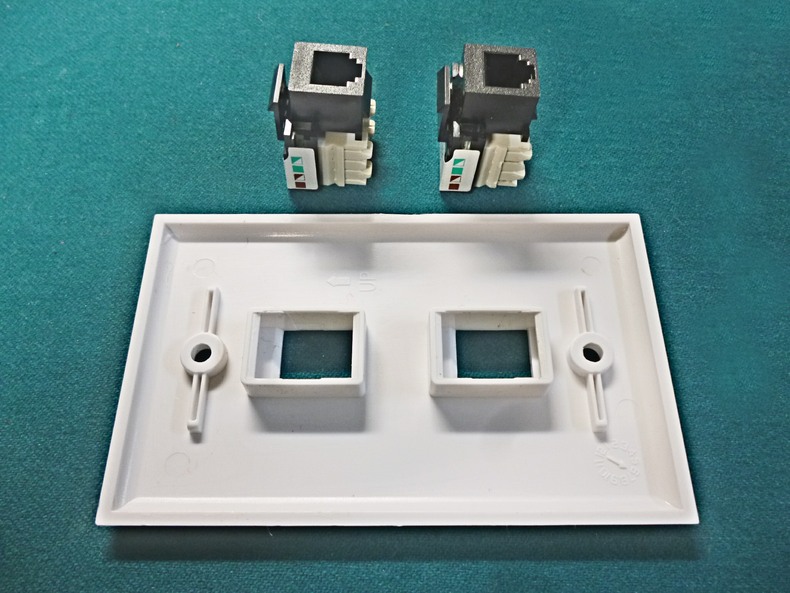
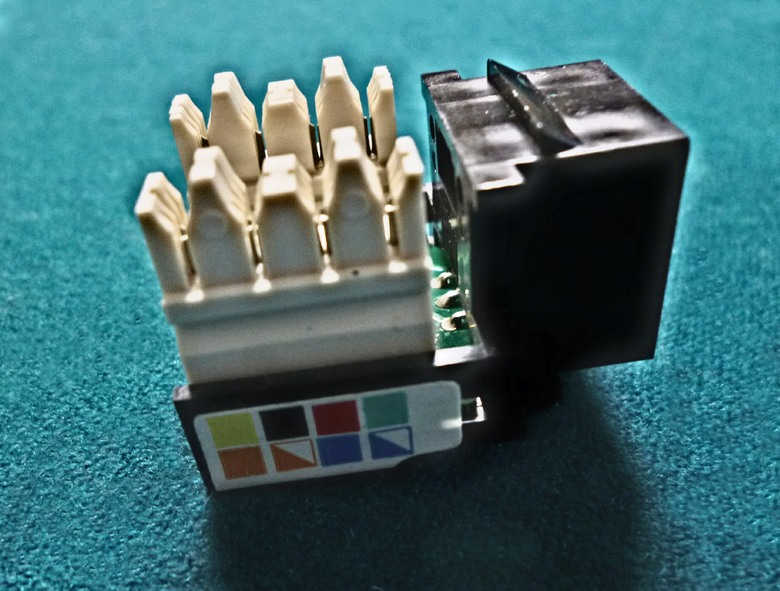 |
|
For CAT5 style wiring (which is commonly used for phone wiring from the Demarc to the phone jacks), the four wires on this side will be the red, red/white, blue and blue/white; the other four wires, green/white, green, and brown/white, brown pairs will be on the other side (see photo above). If the legacy phone wiring is chosen for this "input wiring" (see below), and since the most common phone cable is 4-wire, in that case, the four wires on this side will be white, black, red, green and the other side would normally not have any wires. |
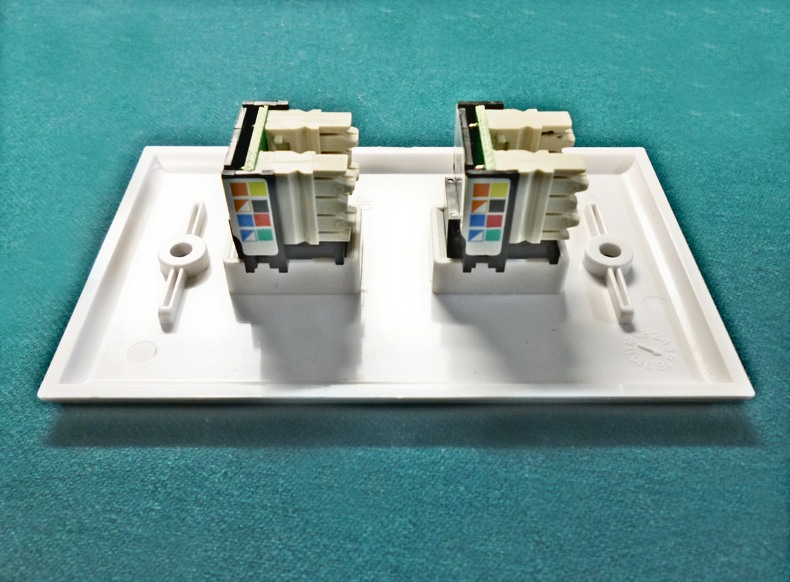
RJ11 and RJ45 Jacks |
||||||
| Application | Jack | Width |
Wire Positions |
Contact Positions | Contacts | # of Phones |
| Phone | RJ11 | 9.6 mm (.38") | 8 | 6 | 2 | 1 |
| Phone | RJ14 | 9.6 mm (.38") | 8 | 6 | 4 | 2 |
| Phone | RJ25 | 9.6 mm (.38") | 8 | 6 | 6 | 3 |
| Ethernet | RJ45 | 11.7 mm (.46") | 8 | 8 | 8 | --- |
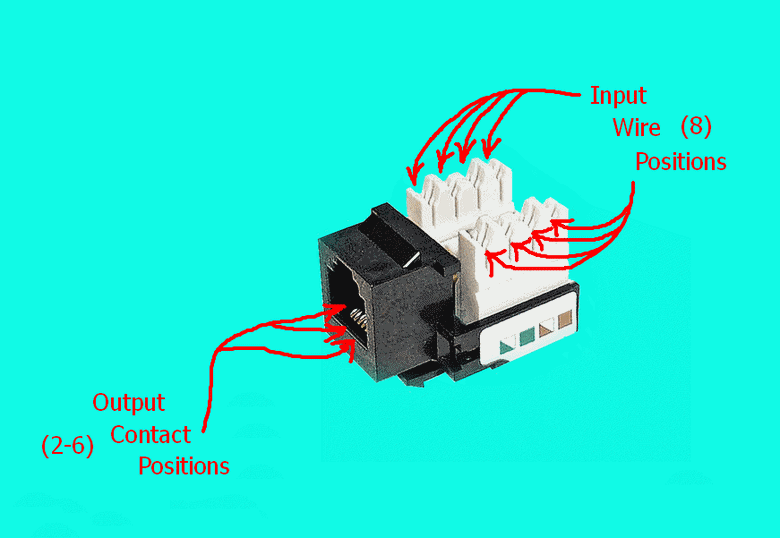 |
||||||
|
There are no more ubiquitous connectors in all of electronics than the RJ11 (phone) connectors and the RJ45 Ethernet/LAN connectors, and most of us think we know all about them. However, "the devil's in the details", and so it's worth a closer look at some of those details. I made the chart above to illustrate several things about these jacks: First, the item being sold here, RJ11, is all three of the RJ phone connectors in one — it's the RJ11, RJ14, and RJ15. This is true because these three are really all the same connector with the exception that the RJ11 only uses two of its six contacts, and the RJ14 uses only four; the same RJ11 male connectors will fit into all three, the just have a differing number of wires, 2, 4, or 6. (By the way, the RJ11 is by far the most common of the three phone jacks - and there are actually many more than these three. In the unlikely event that you will need any others, they're almost sure to be either the RJ14 or RJ25 and so with this connector, you'll be covered.) As for any unused contacts, it's a truism that an electrical wire that doesn't connect anywhere doesn't hurt anything. And, since both the 2-wire (RJ11), 4-wire (RJ14), and 6-wire (RJ25) all use the centermost pins out of the 6 positions, they are, in effect, all the same since the unused positions will not be connected to anything except the incoming wires, but not to the output wires (the telephones). If the input cable is an 8-wire CAT5 cable, there will always be at least two unused wires and often as many as six unused wires. Now, set the phone connectors aside for a moment and consider the RJ45 connectors, which I sell as a separate Ebay item (see the link to this item below). The RJ45 is an even more common connector than the RJ11 and all the other phone RJ connectors combined. The main differences being that it uses 8 wires rather than the 2, 4, or 6 used by the RJ connectors and that it's slightly wider. Please note that this extra width is almost exactly about 2mm; the RJ45 and RJ phone connectors all have a 1mm pin spacing, so this extra width is exactly two pins wider. Now, consider the external wiring. The RJ11 connectors use a varying combination of 2-wire, 4-wire, 6-wire and many other wiring groups, sizes, styles, indoor/outdoor, etc. The phone companies could never settle on a standard wiring. Then along came CAT5 Ethernet computer wiring, with its four sets of twisted, four-color, white striped wires and a standard was born. Add to that the fact that almost every building that has computers and Ethernet wiring also has to have telephone and fax wiring in the same offices, and it didn't take long for some genius engineer to decide to use CAT5 for all of it. Almost, but not quite. There was a wide variety of RJ11 connectors in use, and they would plug into the RJ45 connectors, but when they do, they're a little loose. What's more, people were used to the sometimes flat, 2 wire and 4-wire telephone cables. (The 4-wire is so popular, it's used even where 2-wire will do.) And there's something that just doesn't feel right about using an 8-wire, sometimes shielded cable where a much smaller cable will do. So a middle-of-the-road, compromise solution was created; the RJ11 jack itself was kept, along with its 2-wire, 4-wire, or 6-wire telephone cables that go directly to the phones themselves (marked as "Output Contact Position" wiring above). But the jack's incoming wiring (marked as "Input Wire Positions" above) was adapted so that it could accommodate the twisted-pair, 8-wire, CAT5 cables, along with its color codes, or, if the user preferred, keep this input wiring the same as before, the older style 2-wire or 4-wire telephone wiring. The color coding of the modern RJ11's connector being sold here reflects this adaption by showing the CAT5 codes, 4 each along the bottom of each side, for a total of 8, or else the standard telephone codes of white, black, red, and green, for a total of 4-wires only along one side (see the photo with the red border above). This is maybe not a perfect solution, but it seems to be a workable one, and it does give the user the choice of how to wire his phone system. |
||||||
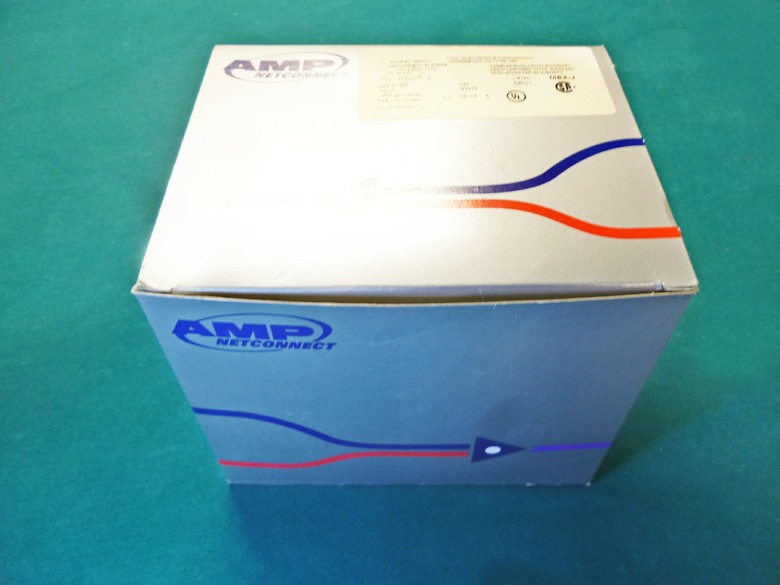 |
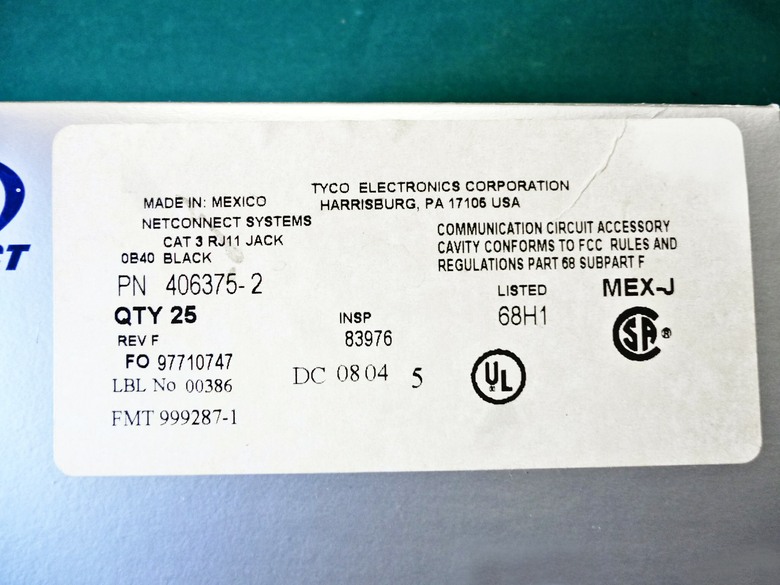 |
|
Here are the boxes and labels. The top photo is the box of 25 that the manufacturer ships. The second is its label. The third picture is the package of 1 (this is what you'll get, plus the white wall plate), and the bottom photo is a blowup of the third picture's label. |
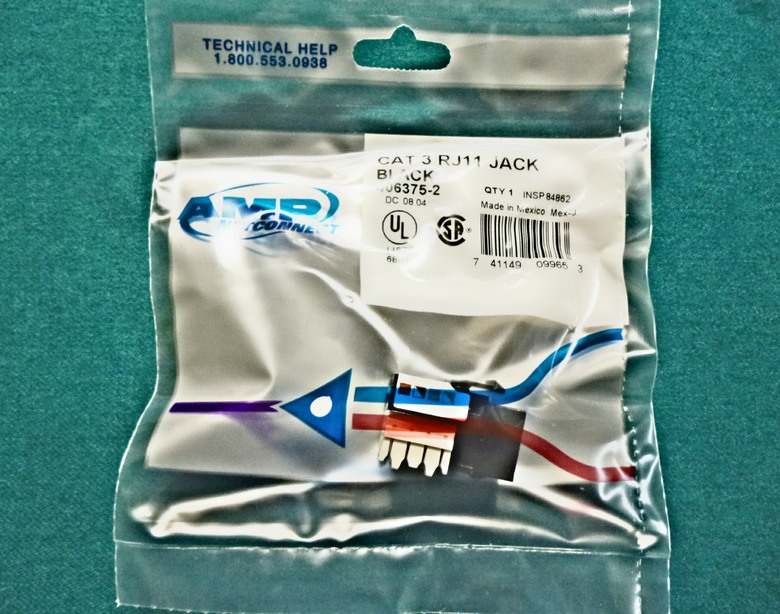 |
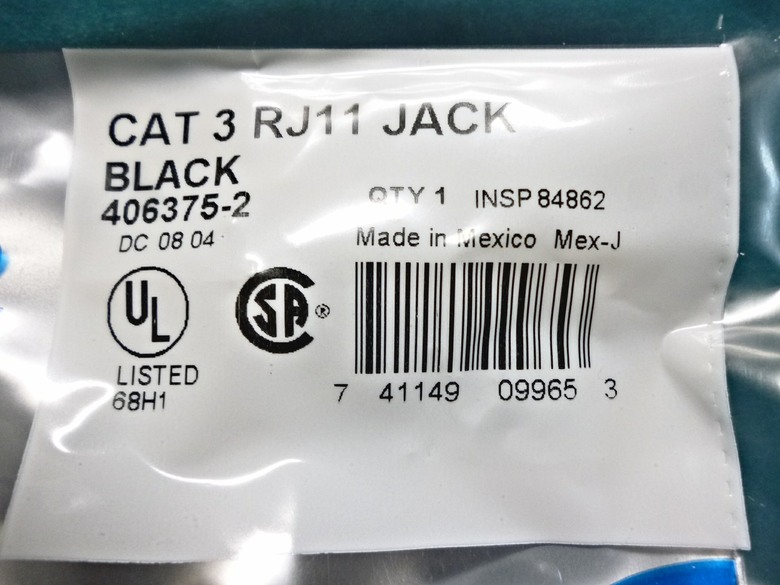 |
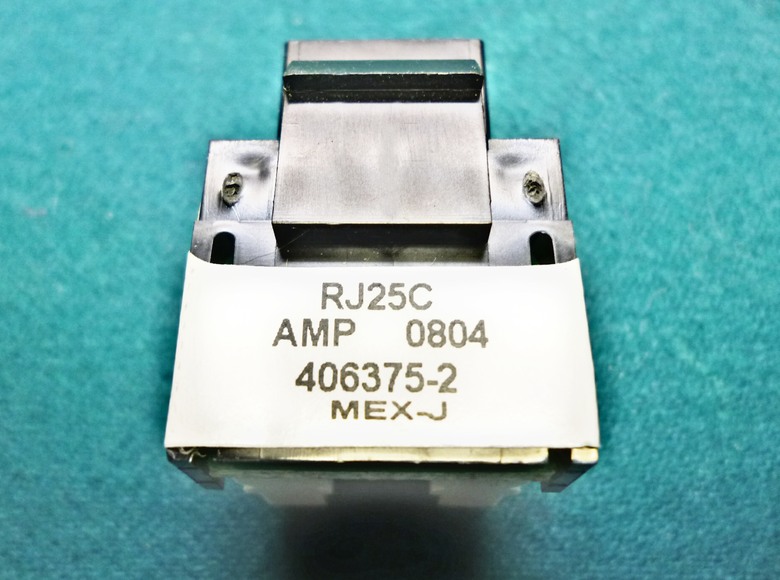 |
|
This photo shows the bottom of the connector, with the plug type, RJ25, (read RJ11)and the part number, AMP 406375-2. |
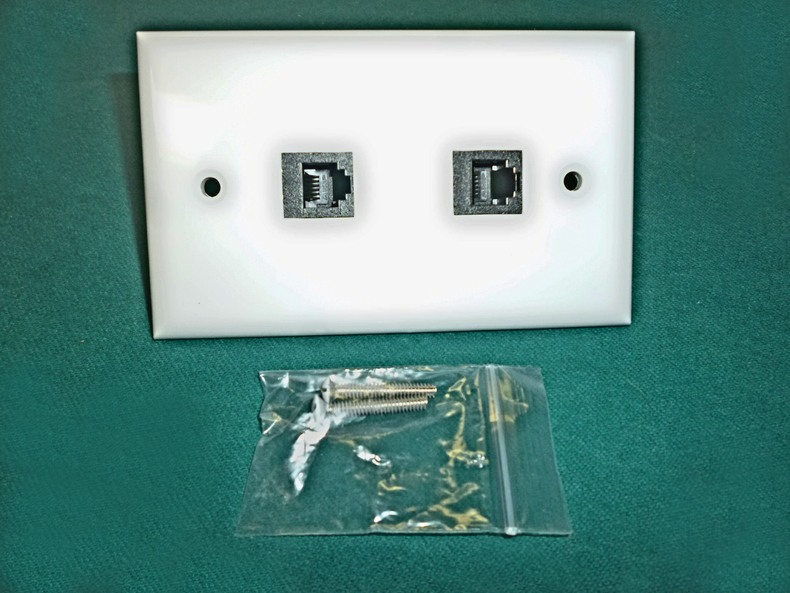
|
To leave this item, and go to the item below,
click this link: |
|
I have other computer items. If you'd like to see them, just click the green link below. |
|
Click here to see my Computer Items Click here to visit my store (list view) Click here to visit my store (gallery view) Click here to save me as a seller |